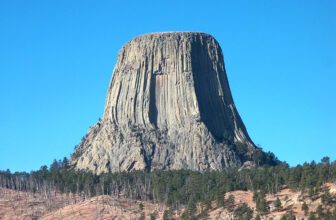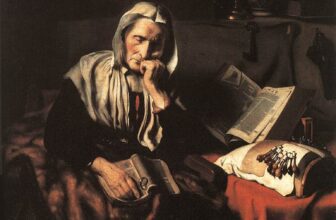
Best Photography Tips for Capturing the Louvre Museum
The Louvre Museum in Paris is not only the world’s largest art museum but also one of the most photogenic landmarks on the planet. Its iconic glass pyramid, sprawling gardens, and timeless interiors offer endless opportunities for stunning photography. Whether you’re a seasoned professional or a casual photographer with a smartphone, the Louvre provides the perfect canvas to capture incredible shots. This comprehensive guide offers the best tips for making the most of your photography experience at the Louvre Museum.
1. Plan Your Visit for the Best Lighting
Photography is all about lighting, and the time of day can make a significant difference in your photos.
- Golden Hour: Arrive early in the morning or just before sunset to take advantage of the soft, golden light that bathes the museum and its surroundings. The Pyramid and the Cour Napoléon are especially stunning during this time.
- Night Photography: The Louvre transforms into a magical wonderland at night, with the glass Pyramid illuminated against the dark sky. Bring a tripod to capture long-exposure shots and take advantage of the museum’s dramatic lighting.
2. Scout the Best Locations
The Louvre’s massive grounds and intricate interiors can be overwhelming, so it helps to know where to focus your efforts. Here are some of the most photogenic spots:
Exterior Locations:
- The Glass Pyramid: The iconic centerpiece designed by I. M. Pei is a must-capture landmark. Experiment with different angles and distances to highlight its geometric beauty.
- The Cour Napoléon: This vast courtyard offers a fantastic perspective of the museum’s historic architecture. Use the reflecting pools for creative shots.
- The Tuileries Gardens: Adjacent to the Louvre, the gardens offer lush greenery, sculptures, and a relaxed atmosphere perfect for scenic photos.
- The Arc de Triomphe du Carrousel: Located near the Louvre, this smaller triumphal arch adds a touch of historic charm to your shots.
Interior Locations:
- The Denon Wing: Home to the Mona Lisa and The Wedding at Cana, this area is perfect for capturing iconic works and the grandeur of the Louvre’s galleries.
- The Sully Wing: This section includes stunning staircases, ancient artifacts, and beautiful hallways.
- Napoleon III Apartments: The opulent decor of these rooms is perfect for capturing the extravagance of 19th-century Paris.
- The Spiral Staircase: Near the Pyramid entrance, the sweeping spiral staircase is a favorite for architectural shots.
3. Use the Right Equipment
The equipment you use can make or break your Louvre photography experience. Here are some tips:
- Camera: A DSLR or mirrorless camera offers the most flexibility, but even a smartphone can produce stunning results with the right settings.
- Lenses: A wide-angle lens is ideal for capturing the grandeur of the architecture, while a zoom lens helps you get close to details and distant subjects.
- Tripod: Essential for night photography and long-exposure shots, but check the museum’s rules—tripods may not be allowed inside.
- Filters: A polarizing filter can help reduce glare and enhance colors, especially for outdoor shots.
4. Master Composition Techniques
Great photos often come down to how you frame your shot. Use these composition tips to elevate your Louvre photography:
- Rule of Thirds: Place your subject off-center for a more dynamic and visually appealing shot.
- Leading Lines: Use pathways, staircases, or architectural lines to guide the viewer’s eye through the image.
- Reflections: Take advantage of the reflecting pools near the Pyramid for creative shots that play with symmetry.
- Framing: Use arches, doorways, or windows to frame your subject and add depth to your photos.
- Negative Space: Allow for empty space in your composition to emphasize your subject and create a sense of scale.
5. Adjust Your Camera Settings
Understanding your camera settings is crucial for capturing high-quality photos, especially in a setting as varied as the Louvre.
- ISO: Keep your ISO as low as possible to reduce noise. Use higher ISO only when shooting in low-light conditions inside the museum.
- Aperture: Use a wide aperture (low f-number) for shallow depth of field when photographing details and a narrow aperture (high f-number) for landscapes and architecture.
- Shutter Speed: Use a faster shutter speed for handheld shots and a slower one for long exposures (with a tripod).
- White Balance: Adjust for the lighting conditions to ensure accurate color representation.
6. Navigate Crowds Effectively
The Louvre is one of the most visited museums in the world, which means dealing with crowds is inevitable. Here’s how to get great shots despite the hustle and bustle:
- Arrive Early or Stay Late: The museum is less crowded in the early morning or late evening.
- Be Patient: Wait for a clear moment to capture popular artworks or landmarks.
- Use Angles: Shoot from unique angles to avoid capturing other visitors in your frame.
- Focus on Details: When crowds are overwhelming, focus on close-ups of smaller details like sculptures, textures, and ornaments.
7. Capture the Art Without Overstepping
Photography inside the Louvre comes with some restrictions. Respect the museum’s rules and the integrity of the artwork:
- No Flash: Flash photography is prohibited to protect the artwork. Use natural light or adjust your camera settings accordingly.
- Keep Your Distance: Don’t get too close to the art. Use a zoom lens for close-ups instead.
- Be Mindful of Others: Avoid blocking pathways or disturbing other visitors while setting up your shots.
- Check Permissions: Some temporary exhibitions may not allow photography. Always check the signs.
8. Make the Most of Reflections and Light
The Louvre offers many opportunities to play with light and reflections:
- Pyramid Reflections: The glass Pyramid creates striking reflections during the day and night. Use these reflections to add a creative twist to your shots.
- Golden Light Indoors: The museum’s galleries often have warm lighting that enhances the ambiance. Use this to your advantage when capturing interiors.
- Window Light: Many of the Louvre’s rooms have large windows that let in natural light, perfect for dramatic shots.
9. Edit Thoughtfully
Post-processing can take your Louvre photos to the next level. Here are some editing tips:
- Enhance Lighting: Adjust brightness, contrast, and highlights to bring out the details.
- Crop and Straighten: Remove distractions and ensure your lines are straight for architectural shots.
- Color Correction: Adjust white balance and saturation for accurate and vibrant colors.
- Use Presets: Lightroom or Photoshop presets can give your photos a professional look with minimal effort.
10. Tell a Story Through Your Photos
Don’t just capture random shots—tell a story with your photography. Consider the narrative of your day at the Louvre:
- Arrival: Start with exterior shots of the Pyramid and surrounding architecture.
- Exploration: Capture the grandeur of the galleries, focusing on both iconic pieces and hidden gems.
- Details: Highlight textures, patterns, and small details that showcase the museum’s artistry.
- Reflection: Conclude with evening or night shots that encapsulate the magic of the Louvre.
11. Share Your Photos Thoughtfully
Once you’ve captured and edited your Louvre photos, share them with the world:
- Social Media: Post on Instagram, Facebook, or Twitter, and use relevant hashtags like #LouvreMuseum or #ParisPhotography to reach a wider audience.
- Photo Blogs: Write a blog post about your experience and include your best shots.
- Print Your Favorites: Consider printing your photos as souvenirs or gifts.
Conclusion
The Louvre Museum is a dream destination for photographers, offering endless opportunities to capture beauty, history, and culture. With the right planning, equipment, and techniques, you can create stunning images that do justice to this iconic landmark. Remember to be patient, respect the museum’s rules, and let your creativity shine. Whether you’re shooting the dazzling glass Pyramid, the intricate sculptures, or the timeless paintings, your photos will serve as lasting memories of your unforgettable day at the Louvre.




